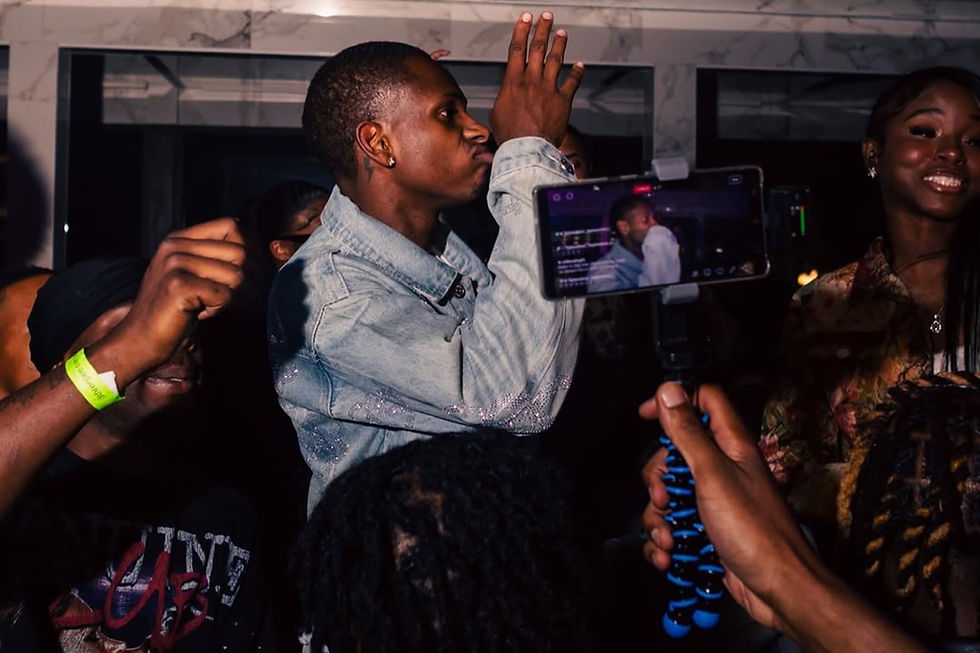Kilo G: A Voice Ahead of His Time in New Orleans Hip-Hop
- Nolazine

- May 7
- 3 min read

Before the world knew of Lil Wayne, Juvenile, or the Hot Boys, a teenager from New Orleans helped lay the foundation for what Cash Money Records would eventually become. His name was Robert L. Johnson Jr., better known as Kilo G—a pioneering artist whose talent surfaced too soon and whose life ended far too early.
In the early 1990s, New Orleans was buzzing with a new, high-energy sound known as bounce music. It was loud, fast, and uniquely Southern. But when brothers Bryan “Baby” Williams and Ronald “Slim” Williams launched Cash Money Records in 1991, they had a broader vision. Starting from the pavement—literally selling tapes out of car trunks—they were on a mission to give a platform to the city’s rawest voices. One of the first to be heard was a 15-year-old with something different to say.
Kilo G stood out not because he followed trends, but because he didn’t. His 1992 debut, The Sleepwalker, was a moody, horrorcore-influenced project that veered sharply away from the bounce sound dominating the city. At an age when most kids are just figuring out who they are, Kilo G was already creating complex, brooding music that explored death, dreams, and street life. While the tape didn’t sell in massive numbers, it signaled a bold new direction for Cash Money—one that prioritized individuality and authenticity.
Recognizing the need for more cohesive production, Cash Money brought in Mannie Fresh in 1993 as their in-house producer. That collaboration would prove pivotal. In 1995, Kilo G returned with The Bloody City, a gritty, cinematic album that merged his lyrical depth with Mannie Fresh’s emerging production genius. The album featured appearances from Southern rap heavyweights Pimp C and Bun B, hinting at Kilo G’s growing reach and potential to become a defining voice not just for New Orleans, but for Southern hip-hop as a whole.
Kilo G’s music offered stories steeped in real-life struggles—blending bravado with vulnerability, street tales with introspection. He was the kind of artist who gave you more than rhymes; he gave you perspective.
But just as his artistry began to sharpen and his voice grew louder, silence fell.
In January 1997, at just 20 years old, Kilo G was shot and killed in his own home in New Orleans' 7th Ward. The assailant remains unidentified. He left behind a grieving family, including his girlfriend, Lakeisha, and their young son, Robert Johnson III, who would grow up knowing his father only through memories shared and lyrics left behind.
The impact of Kilo G’s death was seismic—not just for his loved ones, but for the local hip-hop community. His passing was a sobering reminder of how deeply the streets were entangled with the music. It underscored the dangers many young Black artists face while trying to use music as a way out.
While Kilo G never achieved mainstream fame, his influence is embedded in the DNA of New Orleans rap. He helped shape the earliest sound of a label that would one day become a global powerhouse. And he did it by staying true to himself, speaking truth in a city where survival was never promised.
Today, as fans look back on the rise of Southern hip-hop, Kilo G’s name deserves its place in the story—not just as a cautionary tale, but as a creative force who dared to be different. His life was short, but his voice still echoes in the city he loved, in the artists he inspired, and in the beats that continue to bang through the blocks of New Orleans.






Comments